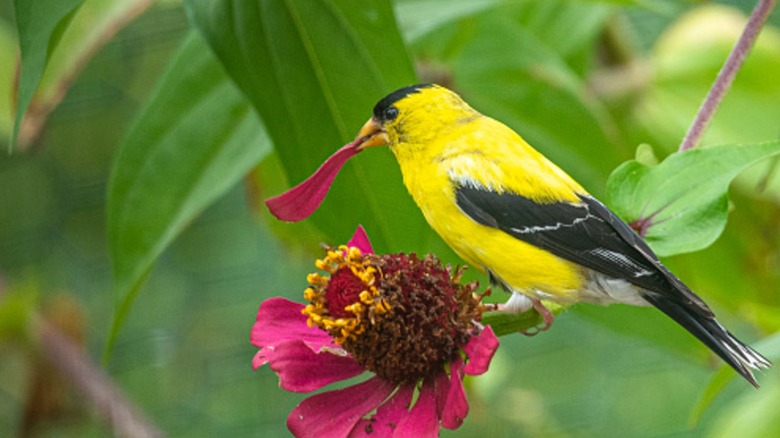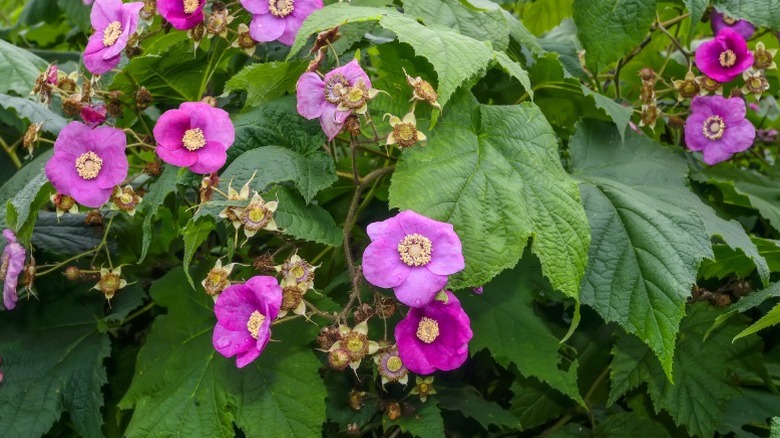The Purple Flowering Perennial You'll Want To Grow To Attract Birds Without A Feeder
A downside that might make you rethink putting a bird feeder in your yard is the absolute mess they can create. While you might enjoy observing the birds that come seeking out seeds, a bird feeder can be a lot of work to maintain. The good news is that there is a pretty perennial you can plant in your yard to attract birds without the mess and headache of a bird feeder. Purple flowering raspberry (Rubus odoratus) is a member of the rose family with fragrant, rose-like flowers. A deciduous shrub, purple flowering raspberry is a native species with special value to birds and other critters.
Found throughout moist, shaded areas and wooded edges in the eastern U.S., this shrub grows an average of 3 to 6 feet high and 6 to 10 feet wide. Its large leaves are vaguely maple-like and change from dark green to pale yellow in the fall. From April to August, its rose-purple flowers bloom, gradually changing to a magenta-pink as the summer deepens. A bonus of this fragrant flower is that it produces nectar that attracts native bee species to your yard. This berry-producing bush is perfect for your yard if you enjoy beautiful flowers and want to skip the bird feeder this year.
Tips to grow purple flowering raspberry in your yard
Hardy in USDA zones 3 through 8, this shrub is not terribly difficult to grow as long as you ensure certain conditions. The purple flowering raspberry prefers well-drained soil that is slightly acidic. Sandy or gravelly soil is fine, but it does not grow well in clay soil. While it will tolerate shade, it cannot thrive in areas with high humidity or high temperatures. Plants growing in shade also have more relaxed growth, with less dense branching and flowering.
Purple flowering raspberry is an ideal perennial to add to your yard to attract birds year-round, with its fast growth rate, long-blooming nature, and edible fruit. From July to October, songbirds, game birds, and other small creatures enjoy the little purplish-red fruits of this shrub, which resemble raspberries. The fruit is dry and not of much value for human consumption, so it's a great plant to leave for the birds.
Be aware of its suckering habit, which will see this species spread into a large colony without careful management. With proper care, however, including regular pruning after fruiting, you and the birds can enjoy this purple-flowering plant all summer long.

